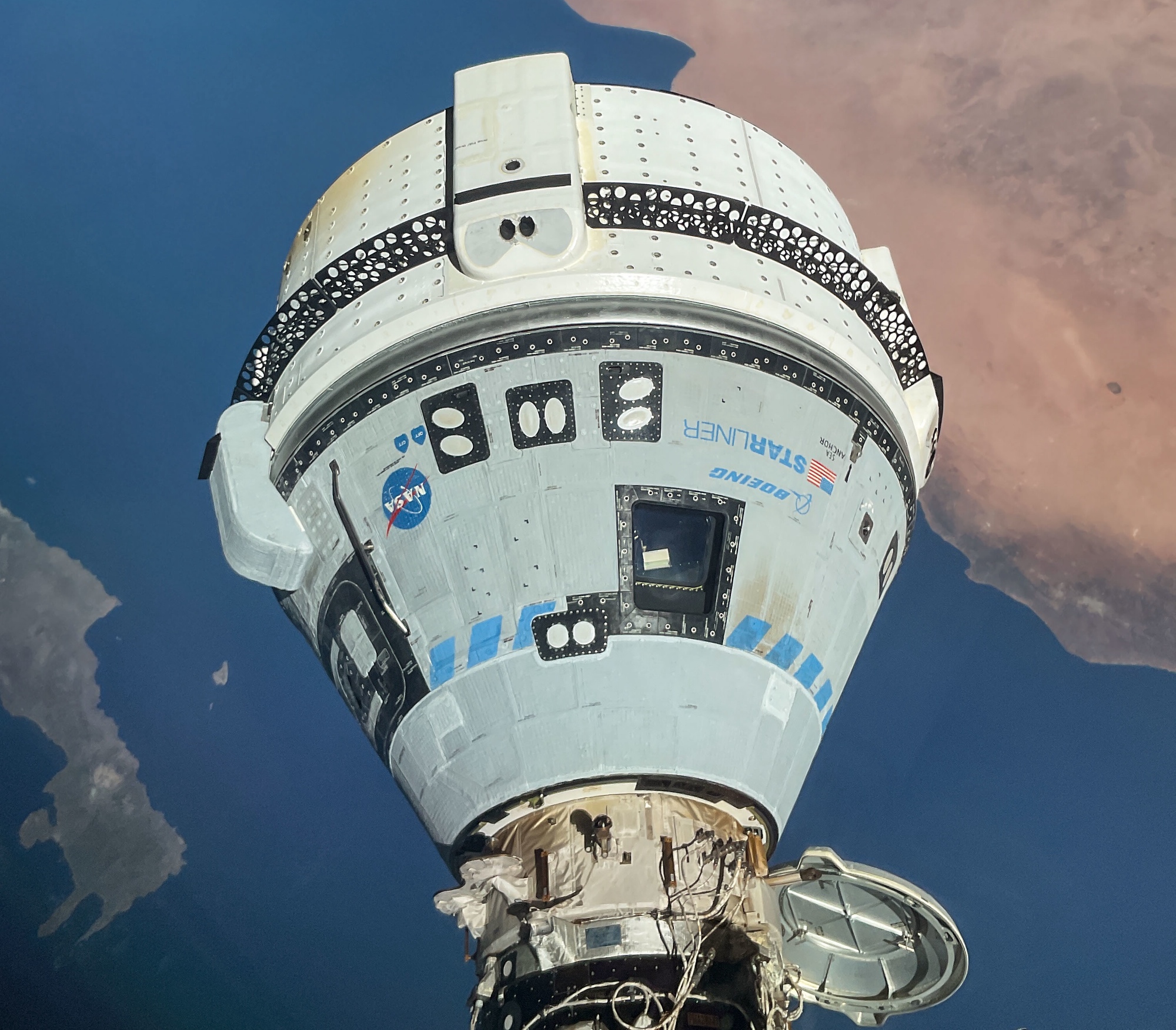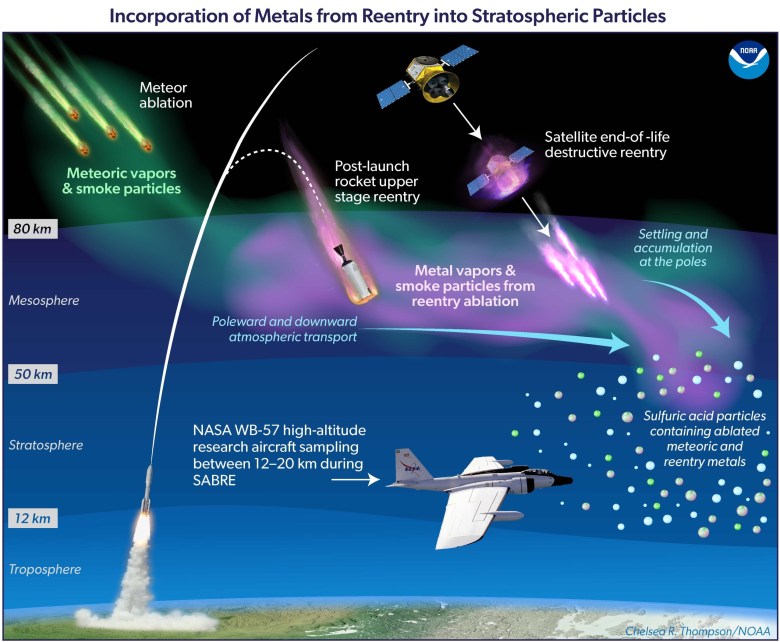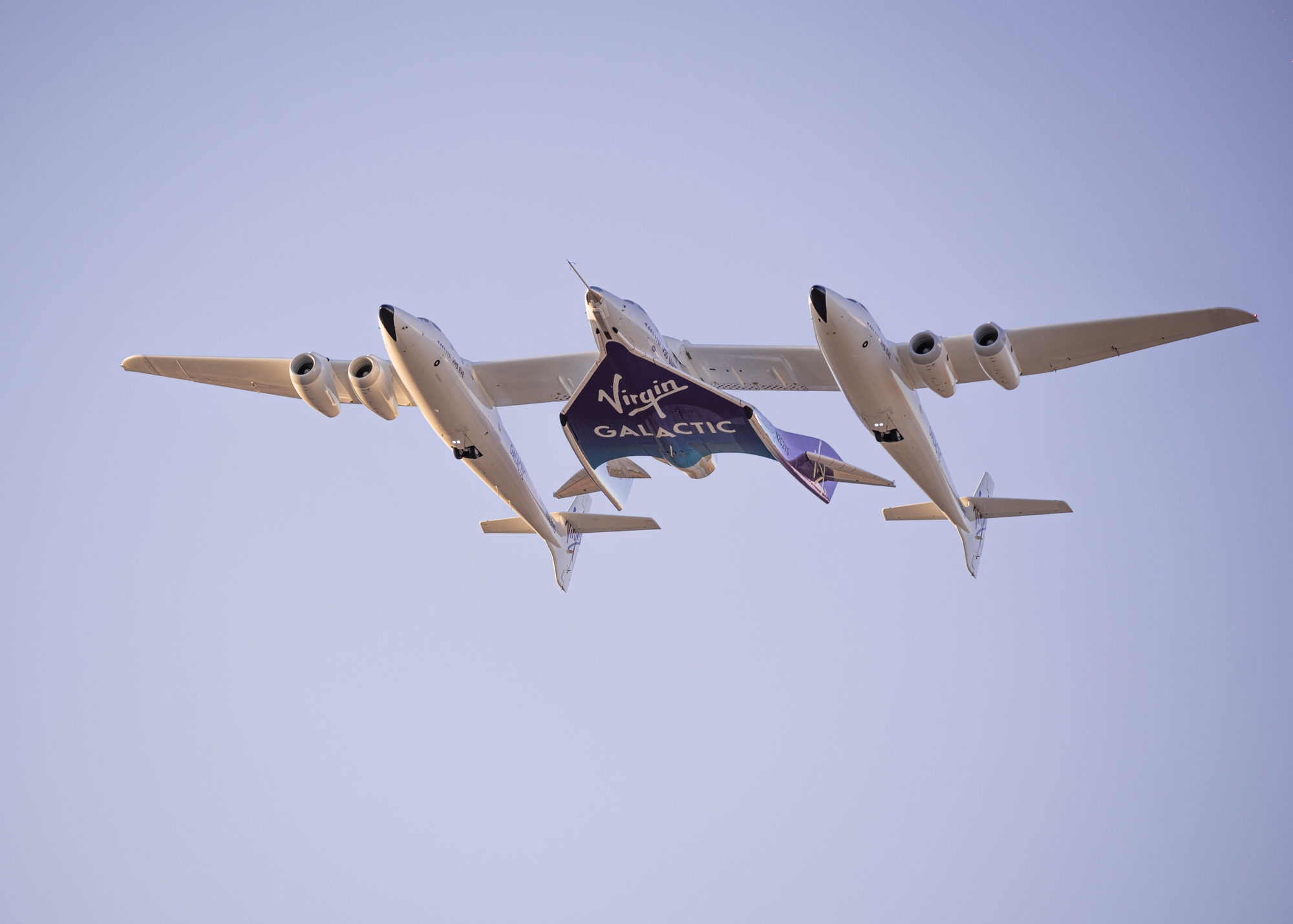WASHINGTON — NASA and Boeing have again extended the stay of the CST-100 Starliner at the International Space Station as engineers wrap up analysis of thruster problems and helium leaks on the crewed spacecraft.
At a June 18 briefing, NASA announced that Starliner’s return to Earth on the Crew Flight Test (CFT) mission, which had already been postponed twice to June 22, had been pushed back again. Starliner is now scheduled to undock from the station at 10:10 p.m. Eastern June 25 and land at White Sands, New Mexico, at 4:51 a.m. Eastern June 26.
Officials from NASA and Boeing said at the briefing that the extended stay at the station will give them more time to study two key issues encountered by the spacecraft during its flight to the station nearly two weeks ago: thruster malfunctions and helium leaks in the spacecraft’s propulsion system.
That work included brief firings of several aft-facing reaction control system (RCS) thrusters, five of which were shut down by the spacecraft’s computer as Starliner approached the station. Four of the thrusters were restored by controllers to allow the docking to proceed.
The one thruster that was not restored before docking showed a “strange signature” producing almost no thrust, said Steve Stich, NASA commercial crew program manager. That thruster will no longer be used by the spacecraft during undocking and deorbiting maneuvers.
The other thrusters, including both those that malfunctioned during the approach and others that behaved normally, showed the expected profile of chamber pressures during a brief burn lasting a quarter of a second. The thrusters also operated as expected during a longer burn of 1.2 seconds each where controllers measured their performance by testing the response of the station’s flight control system.
“Coming out of that, we feel very confident in the thrusters and the team is just making sure to go look at the thrusters in detail across the whole flight,” he said. That includes comparing their performance to that on an uncrewed test flight in May 2022, called OFT-2, where two thrusters malfunctioned during approach but were restored before the end of the mission.
Stich said engineers are studying what caused the thrusters to go offline during the approach, which may be linked to heavy use. “We have some theories about what’s going on inside the thruster where the thruster gets very hot,” he said, such as high temperatures preventing proper mixing of fuel and oxidizer.
Engineers also used the thruster test to check on the five helium leaks detected in the propulsion system. In every case, he said, leak rates had gone down, in one case by 50%.
“It seems to be related to the activity of the thrusters,” he said of the helium leaks. That could be linked to heat from the thrusters or sliding surfaces that wear down seals. Three of the larger leaks likely have similar causes, he noted, while two smaller ones may instead be similar to leaks seen on the OFT-2 mission.
Like the thruster tests, Stich said the reduced helium leaks give him confidence the spacecraft will be able to perform as expected during undocking and deorbiting maneuvers. “The demand on the thrusters is much, much less” in the later phases of flight, he said.
He said the helium leaks are taking place in different “doghouses” on the service module from the malfunctioning thrusters. However, he stated that the “dynamic operations” during Starliner’s approach to the station may have both caused the thruster malfunctions and helium leaks.
NASA and Boeing engineers plan to continue analysis of Starliner until June 22, then focus on preparations for undocking and returning to Earth. That work was a factor in the decision to extend Starliner’s stay at the station. “We don’t get the service module back, so this is an opportunity to fully understand the system’s performance without the pressure of schedule,” said Mark Nappi, Boeing vice president and commercial crew program manager. “We have the time.”
He noted that the CFT mission has achieved 77 of 87 flight test objectives set out before launch, with the remainder associated with undocking and landing. Engineers included an unspecified number of additional test objectives to take advantage of the additional time at the station, such as filming operations of Starliner’s hatch and collecting more cabin air temperature measurements.
Both Stich and Nappi emphasized, after repeated questioning at the briefing, that they believed Starliner was safe for NASA astronauts Butch Wilmore and Suni Williams to use for their return to Earth. The extra time, Stich said, allows engineers more time to study the vehicle’s performance, including in a powered-down state that will be used during future long-duration stays at the station.
He added that NASA had cleared the use of Starliner to bring Wilmore and Williams back in an emergency, if needed. “We’re taking a little extra time to review all the data and also learn as much as we can while we have the service module in orbit.”
Spacewalk changes
Wilmore and Williams have been busy at the station helping test Starliner systems. “They love Starliner, and they’re so happy to be a part of the mission,” Stich said.
The two have also been helping out on the station. “We’ve taken advantage of some of their extra time and extra helping hands,” said Dana Weigel, NASA ISS program manager, such as conducting research.
The two assisted a planned June 13 spacewalk by NASA astronauts Tracy C. Dyson and Matt Dominick. That spacewalk, though, was called off just before the scheduled start because of what NASA called a “spacesuit discomfort issue.”
Weigel said that Dominick was the astronaut that experienced discomfort in the suit, but did not elaborate on the specific issue that prompted the postponement. “We couldn’t resolve it that day,” she said.
NASA has since revised plans for upcoming spacewalks, with Dyson and Mike Barratt now scheduled to perform a spacewalk June 24 that features the same tasks as the postponed June 13 spacewalk, which include retrieving a malfunctioning electronics box and collect samples from the station’s exterior that will be used to detect any microorganisms.
Weigel said that Barratt was already slated to perform an upcoming spacewalk and had a suit ready. “We decided it just made sense to use Tracy and Mike,” she said.
That will be followed by a July 2 spacewalk for additional station maintenance, although NASA won’t assign astronauts to it until after the June 24 spacewalk. The agency had planned a series of three spacewalks, but Weigel said that will be reduced to two because of oxygen used preparing for the aborted June 13 spacewalk.



